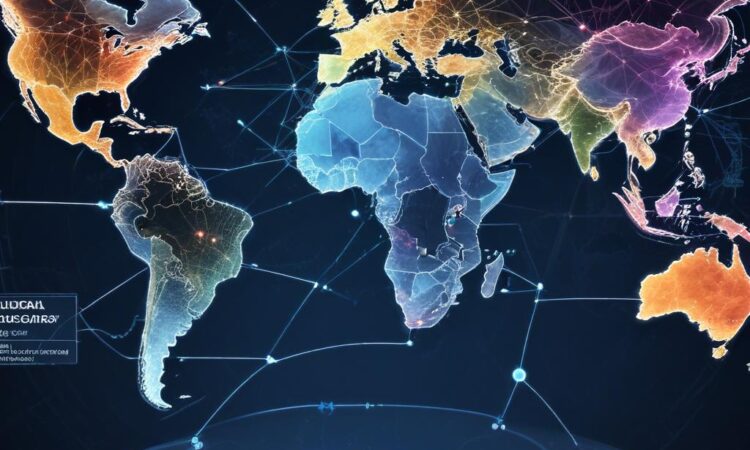Emerging Infectious Diseases Surveillance: News and Discussions
The rapid globalization of travel and trade, coupled with environmental changes and increasing human encroachment on wildlife habitats, has significantly increased the risk of emerging infectious diseases (EIDs). These diseases, previously unknown or rarely encountered, pose a substantial threat to global health security. Effective surveillance systems are paramount in detecting and responding to these threats, preventing widespread outbreaks and minimizing their impact on populations worldwide. This website serves as a platform for news, discussions, and analysis related to the critical area of emerging infectious diseases surveillance.
The Importance of Robust Surveillance Systems
Robust surveillance systems are the cornerstone of effective EID prevention and control. These systems rely on a multi-faceted approach, encompassing various elements crucial for early detection and timely response. These include:
- Early Warning Systems: Rapid detection of unusual patterns of disease occurrence is crucial. This requires sophisticated data analysis techniques and the integration of information from diverse sources, including healthcare facilities, laboratories, and veterinary services.
- Laboratory Capacity: The ability to rapidly diagnose and characterize new pathogens is essential. Well-equipped laboratories with skilled personnel are crucial for identifying emerging threats and understanding their characteristics.
- Data Management and Analysis: Effective data management and sophisticated analytical tools are necessary to identify trends, patterns, and potential outbreaks. This includes real-time data collection, integration, and interpretation.
- Risk Assessment and Prediction: Understanding the risk factors associated with the emergence and spread of EIDs is vital for proactive interventions. This involves epidemiological modeling, environmental surveillance, and the assessment of social and economic factors.
- Public Health Response Capacity: The ability to implement swift and effective public health interventions, including containment measures, vaccination campaigns, and public health communication, is essential for limiting the impact of outbreaks.
- International Collaboration: The rapid spread of infectious diseases necessitates strong international collaboration. Sharing information, coordinating responses, and providing technical assistance across borders is crucial for effective global health security.
Global Collaboration: A Necessary Component
The interconnected nature of the global community makes international collaboration in EID surveillance indispensable. No single country can effectively address the threat of EIDs alone. Global partnerships are essential for:
- Information Sharing: The timely sharing of epidemiological data, laboratory findings, and genomic information is paramount for rapid response. International networks and platforms facilitate the efficient dissemination of critical information.
- Capacity Building: Strengthening the surveillance capacity of countries with limited resources is crucial. This involves providing technical assistance, training, and equipment to enhance their ability to detect and respond to EIDs.
- Joint Research and Development: Collaborative research efforts are essential for the development of new diagnostic tools, vaccines, and therapeutics. International partnerships facilitate the sharing of knowledge and resources, accelerating the development of crucial countermeasures.
- Coordination of Response: In the event of an outbreak, coordinated international response is vital. This involves the deployment of expert teams, the provision of logistical support, and the harmonization of intervention strategies.
- Resource Mobilization: Securing funding and resources for EID surveillance and response requires global collaboration. International organizations and donor countries play a key role in mobilizing resources to support global health security initiatives.
Case Studies and Examples
Numerous examples highlight the importance of effective EID surveillance and global collaboration. The rapid response to the Ebola outbreak in West Africa demonstrated the importance of international collaboration in containing a deadly virus. Conversely, delays in detection and response to outbreaks, such as the early stages of the COVID-19 pandemic, underscore the critical need for robust surveillance systems and prompt action. Analysis of past outbreaks provides valuable lessons learned, informing the development of more effective strategies for future preparedness.
Analyzing specific examples, such as the emergence of new influenza strains, the resurgence of measles in various regions, and the ongoing threat of antibiotic-resistant bacteria, illustrates the dynamic nature of EID threats and the continuous need for adaptation and improvement in surveillance strategies. Each case study provides critical insights into the challenges and successes of EID surveillance, informing future approaches and strengthening global preparedness.
The ongoing evolution of pathogens, coupled with the potential for novel EIDs to emerge, underscores the continuous need for investment in surveillance systems and global collaboration. This involves not only improving existing infrastructure and capacity but also adapting to new technologies and challenges. Artificial intelligence and data analytics are playing an increasingly important role in enhancing the speed and accuracy of surveillance, enabling faster detection and response to emerging threats.
Strengthening global health security requires a multi-sectoral approach, involving collaboration between governments, international organizations, research institutions, and the private sector. This includes not only improving surveillance capacity but also addressing underlying social, economic, and environmental factors that contribute to the emergence and spread of infectious diseases. Building resilient healthcare systems and strengthening public health infrastructure are essential components of enhancing global preparedness.
Ongoing monitoring of emerging trends, including the impact of climate change on disease transmission, the rise of antimicrobial resistance, and the potential for bioterrorism, is vital for proactively addressing future challenges. A proactive, data-driven approach, supported by strong international collaboration and a commitment to global health security, is essential for protecting populations worldwide from the devastating impact of emerging infectious diseases.
Further research and development into new technologies, data analytics techniques, and epidemiological models are crucial for improving the effectiveness of EID surveillance. This includes exploring the potential of artificial intelligence and machine learning to enhance early warning systems and predictive capabilities. Investing in research and development is a critical component of enhancing global preparedness and reducing the impact of future outbreaks.
This ongoing discussion and analysis of emerging infectious diseases surveillance, including the importance of global collaboration, will continue to evolve as new challenges emerge and new knowledge is gained. Continuous learning and adaptation are essential for ensuring the effectiveness of global efforts to prevent and control outbreaks.

